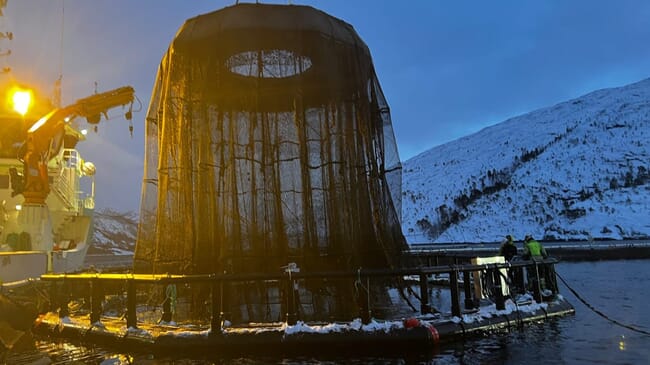
© Cermaq
The very first iFarm fish – which have just been harvested – were stocked in Cermaq’s Martnesvika sea site in the autumn of 2020. Results at harvest suggest that the health and welfare of the fish has been good in the iFarm pens – in which artificial intelligence and machine learning, developed by Cermaq and BioSort, aim to identify each individual fish in a pen and give individual follow-up and health journals.
The iFarm project is planned to run over five years. In phase 1, the main task has been adapting the iFarm equipment in the pen to the fish's behaviour and ensuring that the fish are well and have good welfare.
"The fish behaviour we have observed in phase 1 tells us that the fish is doing fine with the iFarm equipment in the pen. This is further supported by the results from the harvest. The fish has had a good life in the iFarm pens," said Cermaq’s iFarm project manager, Karl Fredrik Ottem, in a press release.
The need for delicing was reduced by 50 percent and welfare indicators were good throughout the production cycle, according to Cermaq.
Room for improvement
Despite many positives, Cermaq admits that the project is still very much a work in progress.
“The iFarm concept cannot be combined with ordinary underwater feeding equipment, and the harvest results showed that there is a need for further development of the underwater feeding system. The first production [cycle] has also provided important experience in terms of solutions for integration between various main components of iFarm and how these should be further developed to improve handling operations and daily operations,” the company stated.
Cermaq also needs to improve the camera arrangement, lighting and data processing to enable a health record for each fish.
"Checking the fish in real time with cameras from multiple angles opens up to tell more about each fish, but at the same time it requires a lot from the software and hardware solutions we develop," says general manager of BioSort, Geir Stang Hauge.
The further development of iFarm - phase 2 - is taking place in Vesterålen. An entire sea site has been equipped with iFarm setups in all the pens, after the fish was stocked last autumn. In this phase, there will be real full-scale testing of the concept and technology.
"We have learned a lot that we have already implemented in phase 2, and we have received a number of answers that take us to the next step. An important part of the innovation work is to find out what works and what does not work," says Ottem.



